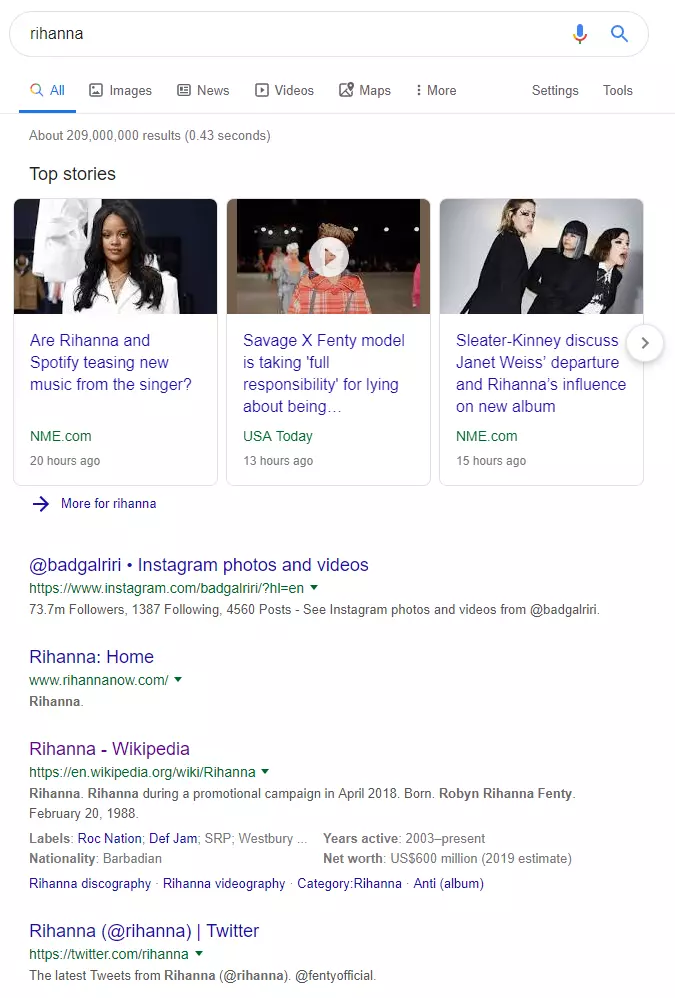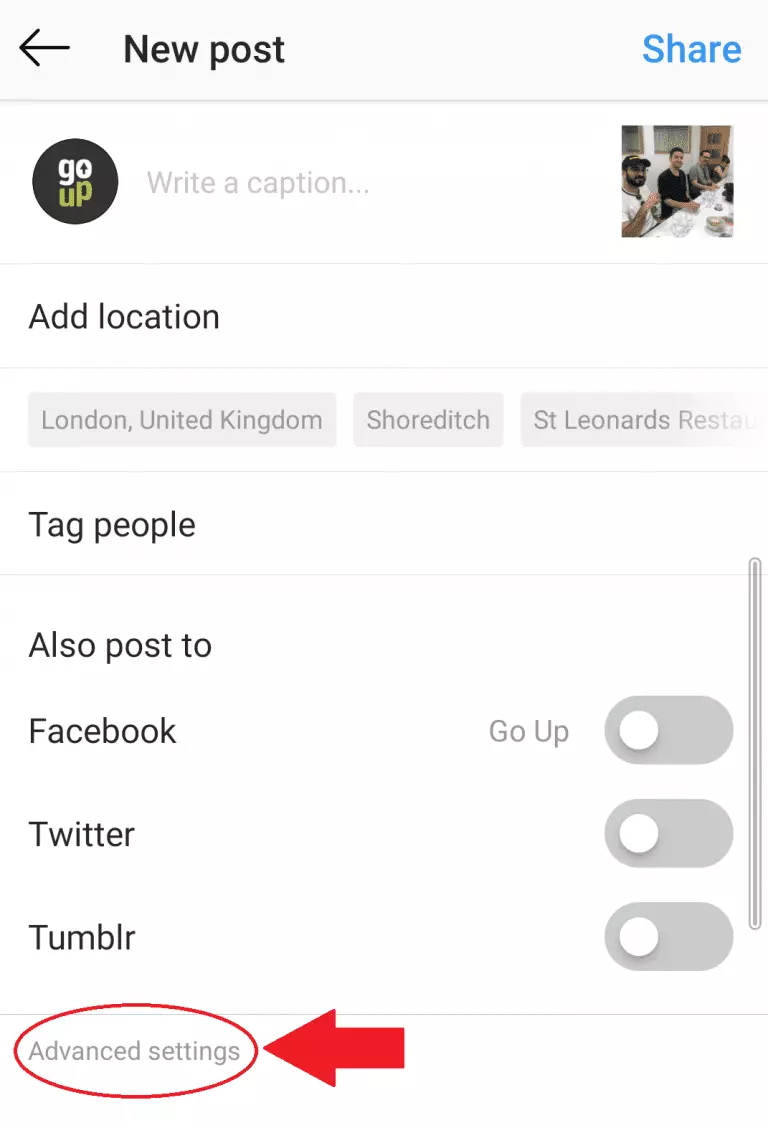
4 mins
OpenCan Social Media And SEO Work Together To Boost Visibility?
7 mins
Modern businesses know that Instagram is a key digital marketing platform for conveying brand and attracting social engagement. But does Instagram also have SEO benefits that you may be overlooking?
5th August 2019

83% of Instagram users have discovered new products or services through the platform, and 80% rely on profiles when deciding whether to part with their cash.
Whether you’re looking for holiday inspiration, artistic food photos, or a selection of lol-worthy memes about your favourite TV show, Instagram has it all. As a hotbed of photo and video content courtesy of over 1 billion monthly active users, it’s now the second most engaging social network after Facebook, with the average person scrolling for 53 minutes a day. Of course, its astounding popularity is far too big for businesses to ignore, which is why more than 25 million brands have Instagram accounts today.
This has proved to be an effective way of building a company’s reputation and with more than 200 million users visiting at least one business profile daily, Instagrammers are keen to engage with brands that share appealing content. As a result, 83% of them have discovered new products or services through the platform, and 80% rely on profiles when deciding whether to part with their cash.
But the potential benefits of engagement on Instagram don’t stop at your profile, they can extend to your website too. Though Google hasn’t specified exactly how social metrics influence search results, platforms like Instagram can work with your SEO strategy by encouraging user engagement, assisting with link building, and more. Therefore, by thinking carefully about your social media optimisation, your business’ Instagram profile could make all the difference to your search rankings.
Google has repeatedly said that social signals are not a direct ranking factor. However, that doesn’t mean that social channels are of no benefit to SEO. In fact, it’s quite the opposite. Numerous studies have found strong correlations between social signals and ranking positions. Top-ranked websites in SERPs tend to have vastly more social signals between all other pages, primarily due to branded websites performing strongly in social networks.
The power of Instagram cannot be understated. It’s unlikely to yield instant results, but its overarching presence makes it vital in promoting websites, boosting brand awareness, sharing link-worthy content, and controlling online reputation. Here are six ways in which Instagram can be used to augment your SEO strategy:
High-quality content has been one of the most important factors in SEO since Google rolled out its Panda algorithm in 2011. This update rewarded websites that featured exceptional content and reduced the presence of poorly constructed pages in its organic search engine results pages (SERPs).
Google has repeatedly said that social signals are not a direct ranking factor. However, that doesn’t mean that social channels are of no benefit to SEO.
Hopefully, your company website is already packed with posts as appealing to visitors as they are to Google itself. However, your Instagram content is also important for SEO purposes as SERPs often direct users to social media profiles as well. For instance, both Topshop and Glossier own Instagram pages loaded with relevant, attractive, and regularly-updated content which followers consistently engage with. As we know, Google rewards sites with high engagement rates, so it’s no surprise that these Instagram pages, as well as the official websites, are delivered in the top search results for branded queries.
As another avenue of traffic towards your business, Instagram can increase your company’s online presence and boost brand awareness, which is crucial when it comes to Google rankings. People are more likely to link to you or share your posts when they’re familiar with your brand, and these positive associations can encourage a better click-through rate. Google also rewards pages that attract traffic from a wide range of sources—like direct visits, social media, and email marketing—rather than search traffic alone. With greater brand awareness, this will be easier to achieve.
In terms of using Instagram to improve rankings, you can use the platform to promote your onsite content and direct visitors to the page via the ubiquitous “link in bio”. For example, if you share a link to an interesting blog post on Instagram, this encourages further user engagement through clicks, comments, and shares.
 Many brands simply link to their homepage in their Instagram bio. However, brands also have the option to use the available space to link to a particular page or post they are looking to promote, just like WWF have done above.
Many brands simply link to their homepage in their Instagram bio. However, brands also have the option to use the available space to link to a particular page or post they are looking to promote, just like WWF have done above.
This is even better if you manage to attract the attention of high profile influencers. If they share the piece, or link to it themselves, Google could take note and see this citation by others as evidence your website is a valuable resource, rewarding it accordingly.
Following on from the above point, having more brand-managed platforms within the top positions of branded SERPs means you have more control over how your brand is presented online.
As another avenue of traffic towards your business, Instagram can increase your company’s online presence and boost brand awareness.
Take Rihanna. At the time of writing, if you type the Barbadian megastar’s name into Google, her Instagram profile ranks first. Underneath this, you’ll also find Rihanna’s official website, Twitter profile, YouTube channel and Facebook page within the top six results. Other than the Wikipedia page associated with Rihanna, five of the top six results are managed either by Rihanna herself or presumably by her PR and media team. Aside from Google features like news story carousels and frequently asked questions, this means Rihanna has a large amount of control over what appears within her own branded search landscape.
 By occupying many of the top organic search results, Rihanna and her media team have greater control over her reputation in branded search.
By occupying many of the top organic search results, Rihanna and her media team have greater control over her reputation in branded search.
This is a prime example of how Instagram, along with other social profiles, can be used to take control of branded search results, gaining greater influence on online brand reputation in the process.
Having more brand-managed platforms within the top positions of branded SERPs means you have more control over how your brand is presented online.
Keywords are a core part of SEO. Once you identify the most relevant and useful keywords for both your brand and your audience, you can include them in your content so users are more likely to find your site in organic search. It’s not always easy to identify the best terms to target, which is why professional SEO agencies can offer guidance, conducting keyword research on your behalf and uncovering the phrases likely to have the biggest effect on your business’s SEO.
After identifying your target keywords, look for opportunities to include them in your profile, such as in your Instagram handle (the @) and profile name (featured in your bio). Rather than just having the name of your business, you could add the specific sector such as “hairdressers”, “restaurant”, or “interior designers”.
 In the above example, a tapas restaurant has intelligently used target keywords within their Instagram handle and bio to optimise their profile. They’ve done so in a way that is not spammy and provides genuine use for the user.
In the above example, a tapas restaurant has intelligently used target keywords within their Instagram handle and bio to optimise their profile. They’ve done so in a way that is not spammy and provides genuine use for the user.
Keywords should also be used in your Instagram bio, which is presented as HTML and can be read by a crawler. As it’s virtually the only text on your page, it’s important to make it count so consider how best to make use of the 150 character limit. You can include keywords as standard text or as hashtags. These are clickable links that take users to other relevant posts and are therefore considered to be helpful and beneficial for UX. Hashtags also help promote engagement as they help users find your content within Instagram itself. Using these with standard text clearly emphasises your business while highlighting valuable keywords, increasing the likelihood of your profile being indexed for these terms and attracting more traffic.
Instagram profiles are indexed by Google, but the social platform blocks search engines from indexing individual posts. This makes it unlikely that your images will appear in SERPs, but there is a way around this.
Instagram profiles are indexed by Google, but the platform blocks search engines from indexing posts. It’s only possible for users to find a post in SERPs if there are links pointing to it from other channels.
It’s only possible for users to find your posts in search results if links are pointing to it from other channels. As the Instagram web app relies heavily on JavaScript, links to your posts from other Instagram profiles are not considered legitimate by Google. Some crawlers can’t index pages which code information through JavaScript. To ensure that an individual Instagram post gets indexed and appears in SERPs, you must include a natural link to it from as many of your platforms as possible. Using Instagram recap blog posts or by including citation links when you post an Instagram picture to your blog are two ways of accomplishing this.
You can take this further by encouraging links from other platforms. The more sources linking to a post, the better chance it has of being indexed. Creating strong pieces of content that your followers and customers will want to share to is one of the easiest ways to boost the number of organic links your posts receive. You could also establish relationships with influencers relevant to your industry to encourage the sharing of your posts to as wide an audience as possible. Developing a link building strategy with an SEO team allows you to focus on promoting specific posts in the best possible way, keeping your projects organised.
As well as indexing Instagram posts through backlinks, you need to consider how the meta tags will eventually look in Google’s search results. It’s important to remember that the image caption will be included in the title tag, reading: “Your profile name ‘on Instagram’: Image caption.” If you don’t consider this, your eventual title tag could look incomplete and messy in SERPs.
However, you don’t want to do this at the expense of UX. Google only shows up to 70 characters of a title tag, which is certainly too short to provide a caption that will encourage engagement. Instead, just consider the cut-off point. Try and make your caption as keyword-rich as possible with the most important information close to the beginning, so you don’t lose the most relevant information before the tag is truncated.
 The caption above works nicely as a meta description in search. It’s not too long, so doesn’t get truncated, and includes a call-to-action with both branded and non-branded hashtags.
The caption above works nicely as a meta description in search. It’s not too long, so doesn’t get truncated, and includes a call-to-action with both branded and non-branded hashtags.
You should also keep this in mind when it comes to hashtags. It’s worth including them in the caption for a keyword boost, but slipping too many into the title tag could look spammy. Remember that your title tag should act as a call to action in search results, so it needs to look as enticing as possible to the users who see it.
Alt-text is the text which appears in place of an image that doesn’t load or can’t be seen. Its original and primary purpose is to describe images to the visually impaired, who use screen readers with their phone or computer. However, this is also beneficial for SEO purposes. As search engines aren’t yet able to fully interpret visual information, alt text can help them understand the content of an image.
As search engines aren’t yet able to fully interpret visual information, alt text can help them understand the content of an image.
If your alt text includes one of your core keywords, Google will take this into account when indexing the image alongside the other content on the page. The more relevant Google considers the post to be for a particular keyword, the more likely it is to rank in the corresponding SERP.
Alt text can be no longer than 125 characters, so try and be as concise and clear as possible. Focus on what you want people to remember about the image and use the names of any people in it, as well as any notable text or signage, and colours if relevant. You can add it to your post when writing your caption by clicking on “Advanced Settings” and selecting “Write Alt Text” under the accessibility section.
 To find the alt tag option, click on advanced settings while uploading a photo.
To find the alt tag option, click on advanced settings while uploading a photo.
However, while you want to include keywords where possible, the most important thing is to accurately label the image as it is. Avoid using keyword-heavy text that doesn’t actually describe the contents of the image as Google could consider this to be a black hat SEO tactic. For instance, if your photo shows a pug sitting in a brown wicker basket, you should write this as your alt text rather than “pug sitting in the best dog basket in West London”.